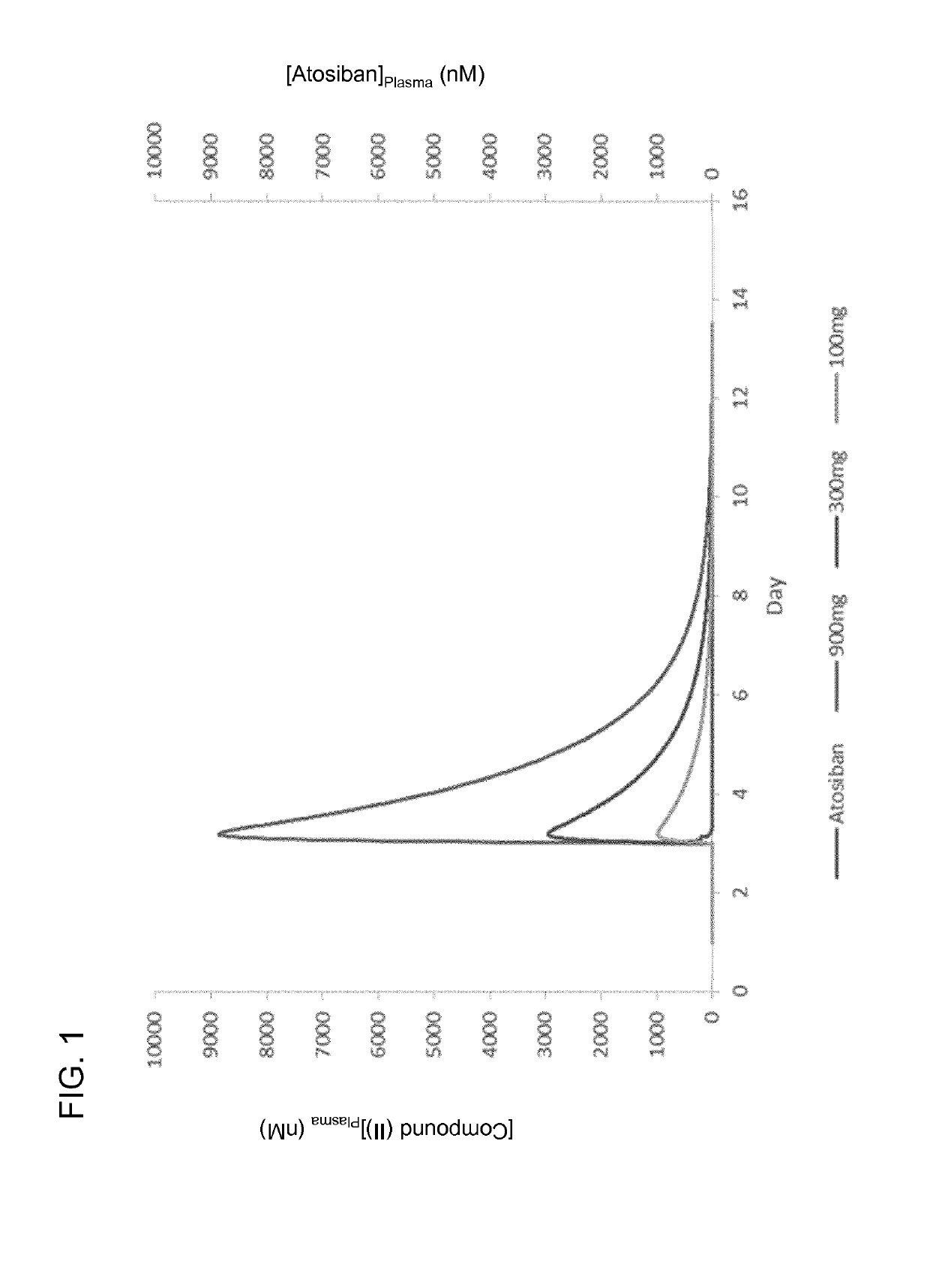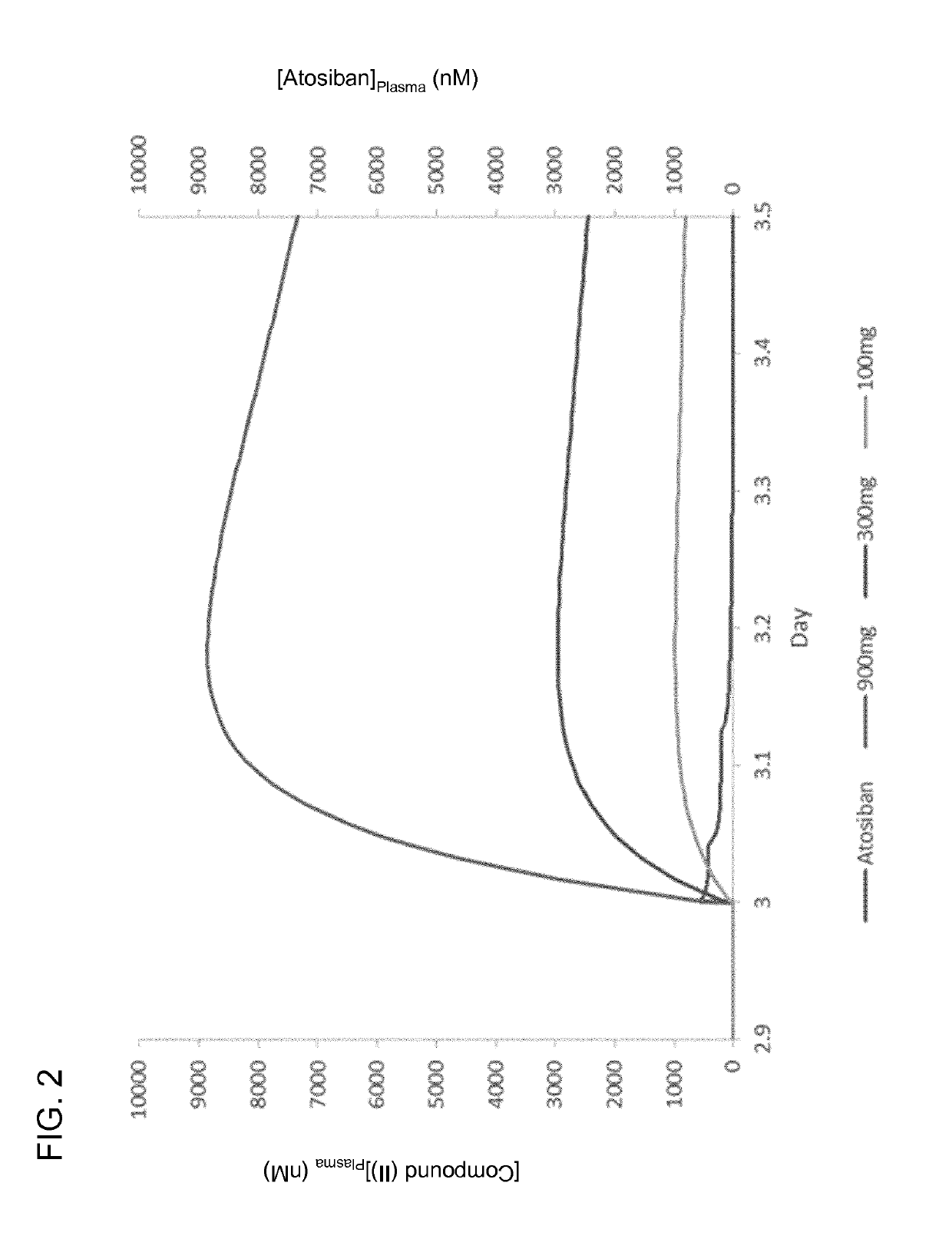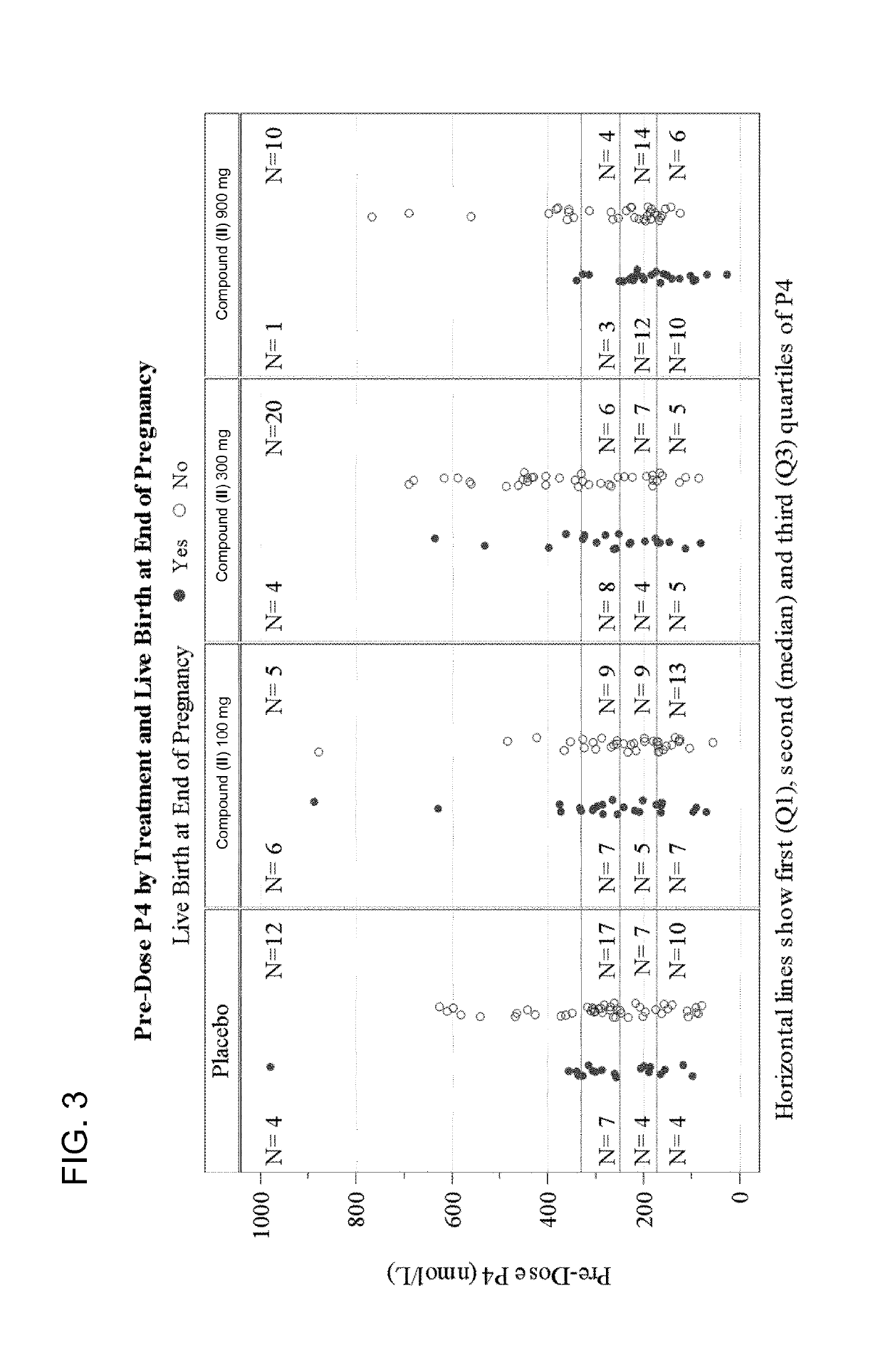Oxytocin antagonist dosing regimens for promoting embryo implantation and preventing miscarriage
a technology of oxytocin and antagonists, applied in the direction of heterocyclic compound active ingredients, drug compositions, peptide/protein ingredients, etc., can solve the problem of reducing the success rate of embryo implantation, and achieve the effect of improving endometrial receptivity, reducing the likelihood of embryo implantation failure and miscarriage, and enhancing endometrial receptivity
- Summary
- Abstract
- Description
- Claims
- Application Information
AI Technical Summary
Benefits of technology
Problems solved by technology
Method used
Image
Examples
example 1
Oral Administration of Compound (II) Promotes Successful Embryo Implantation and Prolongs Pregnancy in Subjects Undergoing Embryo Transfer Therapy
Materials and Methods
[0573]In a randomized, double-blind, parallel groups, Phase 2 clinical study of the efficacy of compound (II) in enhancing endometrial receptivity and promoting successful embryo implantation in humans, this compound was orally administered to subjects undergoing embryo transfer therapy in doses of varying strength. A total of 247 female subjects were selected for treatment based on a variety of inclusion criteria. Of these, 244 subjects completed the study. The study was open to healthy female volunteers from 18 to 36 years of age that had previously undergone up to one IVF or ICSI cycle that resulting in a negative pregnancy test as assessed by hCG detection, despite the transfer of at least one embryo of good quality, which was defined as an embryo having from six to eight blastomeres of uniform size and shape on th...
example 2
Administration of an Oxytocin Antagonist to a Subject Undergoing Embryo Transfer Therapy on the Basis of the Subject's Pre-Treatment Serum Progesterone Level
[0595]Using the compositions and methods described herein, a skilled practitioner can assess the likelihood that a human subject undergoing embryo transfer therapy will benefit from oxytocin antagonist treatment by comparing the serum progesterone concentration of a subject to a progesterone reference level. For example, on the basis of a subject's pre-treatment serum progesterone concentration, a practitioner of skill in the art can determine whether the subject is likely to exhibit increased endometrial receptivity in response to oxytocin antagonist treatment. This determination can subsequently inform the practitioner's decision of whether to administer to the subject an oxytocin antagonist, such as a pyrrolidine-3-one oxime compound of formula (I) or (II) or another oxytocin antagonist described herein or known in the art, s...
example 3
Beneficial Oxytocin Antagonistic Effects and Metabolic Profile of Compound (II)
[0598]Using the compositions and methods described herein, one of skill in the art can administer an oxytocin antagonist to a subject undergoing an embryo transfer procedure, such as an oxytocin antagonist represented by formula (I), e.g., compound (II), so as to promote enhanced endometrial receptivity, reduce the likelihood of embryo implantation failure, and / or prevent miscarriage in a subject following the transfer of one or more embryos to the uterus of the subject. When compound (II) is administered as the oxytocin antagonist, it can be particularly advantageous to administer compound (II) in a substantially pure form with respect to its (3E) diastereomer, (3E,5S)-5-(hydroxymethyl)-1-[(2′-methyl-1,1′-biphenyl-4-yl)carbonyl]pyrrolidin-3-one O-methyloxime, such as in a form containing less than 15%, less than 10%, less than 5%, less than 1%, or less than 0.1% of the (3E) diastereomer. This advantage d...
PUM
 Login to View More
Login to View More Abstract
Description
Claims
Application Information
 Login to View More
Login to View More - R&D
- Intellectual Property
- Life Sciences
- Materials
- Tech Scout
- Unparalleled Data Quality
- Higher Quality Content
- 60% Fewer Hallucinations
Browse by: Latest US Patents, China's latest patents, Technical Efficacy Thesaurus, Application Domain, Technology Topic, Popular Technical Reports.
© 2025 PatSnap. All rights reserved.Legal|Privacy policy|Modern Slavery Act Transparency Statement|Sitemap|About US| Contact US: help@patsnap.com



